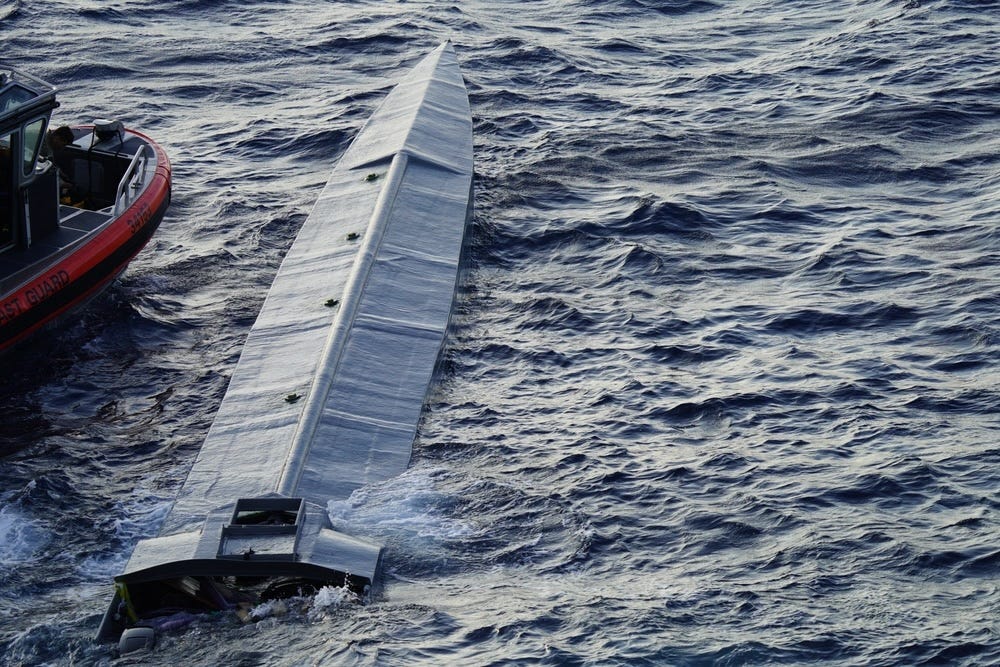
US Coast Guard photo
More than 24 tons of illegal narcotics worth about $510 million was seized by the US Coast Guard earlier this year, the maritime law enforcement agency said in a statement last Wednesday.
The crew of US Coast Guard Cutter James offloaded more than 44,550 pounds of cocaine and 3,880 pounds of marijuana in Port Everglades, Florida, on April 9, an operation that culminated as the Trump administration focused more military assets on stemming the flow of drugs and migrants across the US’s southern border.
Photos of the drug busts showed Coast Guard officers boarding suspected drug smuggling vessels, including a narco-sub, to arrest suspects and seize the illegal narcotics on board.
Ships, aircraft, and drones
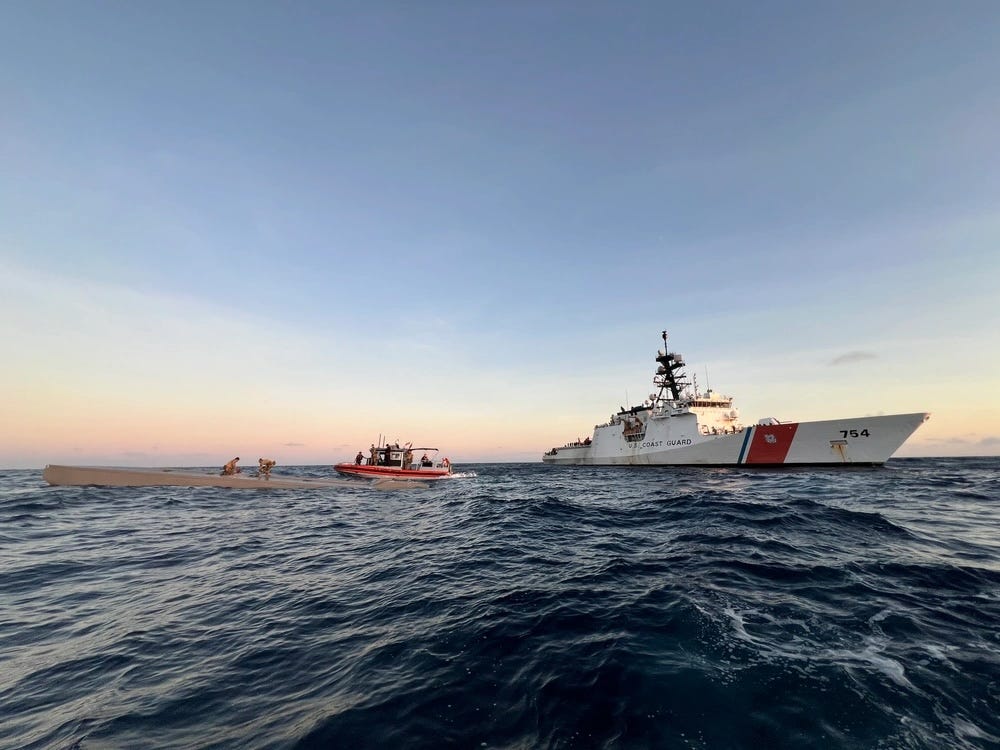
US Coast Guard photo
The Legend-class National Security Cutter James led the 112-day patrol and returned to its homeport in North Charleston, North Carolina, on April 14. The 418-foot vessel is one of the Coast Guard’s most advanced ships, equipped with advanced radar, a 57mm deck gun, and a close-in weapons system.
With a 50-by-80-foot flight deck and aircraft hangar, National Security Cutters like the James are used for missions like drug interdiction, search and rescue, and maritime law enforcement.
USCGC James is built for long-range patrols in both domestic and international waters, making it a frontline asset in intercepting go-fast boats and narco-subs, seizing illegal narcotics, and detaining suspected smugglers.
Crews aboard the Legend-class cutter Stone and the Famous-class cutter Mohawk also assisted in some of the interdictions earlier this year, as well as a fleet of helicopters and aerial drones for airborne surveillance at sea.
Drug busts in the Pacific
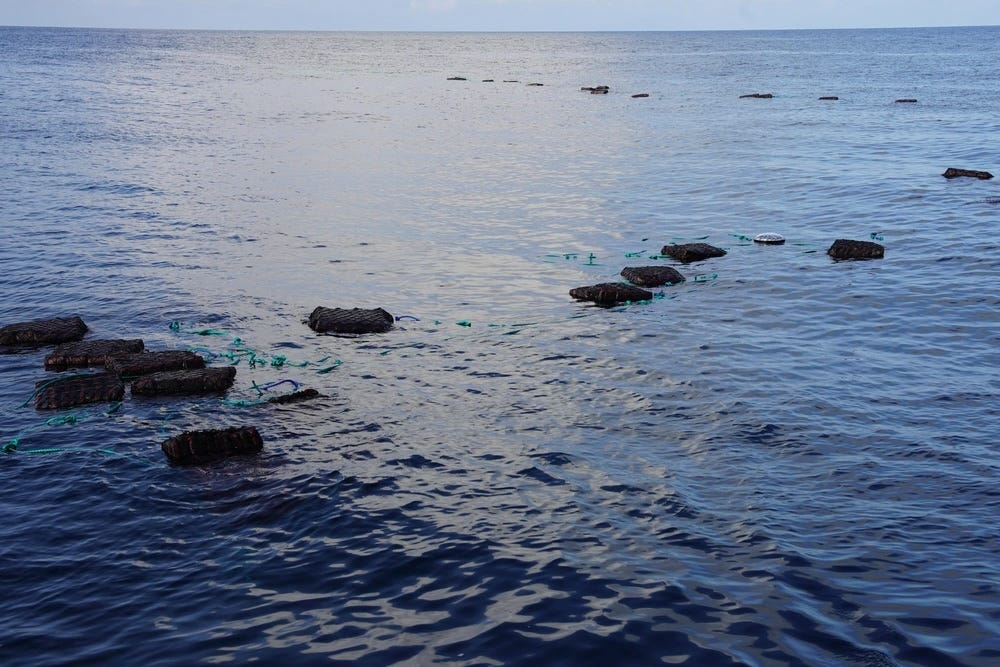
US Coast Guard photo
The Coast Guard ran 11 interdictions over two months, detaining 34 suspected drug smugglers and seizing over 48,000 pounds of cocaine and marijuana from go-fast vessels off the coast of Peru, Ecuador, and the Galapagos Islands.
Helicopters embarked on the Stone and the James intercepted multiple suspected drug-smuggling boats. The boarding team on the James used aerial drones to detect several boats, resulting in the seizure of nearly 5.5 tons of cocaine from late January to early February.
On January 18, a go-fast vessel about 185 miles off the coast of Ecuador jettisoned the drug bales into the water in an attempt to flee law enforcement. Cutter James chased the boat for 60 miles while the crew aboard the Mohawk collected the floating narcotics, recovering nearly 6,000 pounds of cocaine in the bust.
‘Extraordinary seizure’ in 72 hours
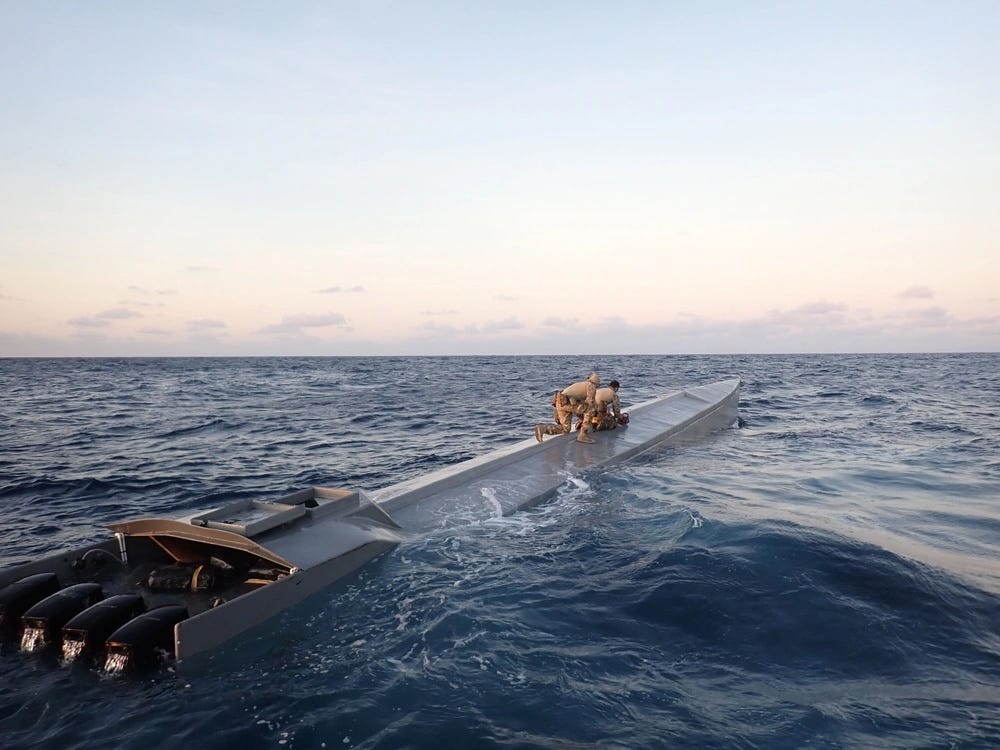
US Coast Guard photo
In the most “remarkable” drug bust of the patrol, maritime law enforcement intercepted six go-fast boats and one narco-sub off the coast of Ecuador in just 72 hours. Capt. Thomas Rodzewicz, commanding officer of James, said in a statement the operation culminated in the “extraordinary seizure of over 24,000 pounds of cocaine and 15 suspected narco-traffickers.”
From January 5 to January 7, maritime patrol aircraft and drones spotted the suspicious vessels and intercepted them with the help of the Coast Guard’s Helicopter Interdiction Tactical Squadron (HITRON) aircrew.
The boarding crew apprehended three suspects and seized over 8,000 pounds of cocaine aboard the so-called “narco-submarine.” The operation was part of a broader mission in which the Coast Guard interdicted several other vessels in just 72 hours.
Narco-subs are semi-submersible boats designed to evade radar and aerial searches in the vastness of the eastern Pacific. They carry most of their illicit cargo below the vessel’s waterline.
After maritime patrol aircraft spotted a low-profile go-fast vessel about 330 miles off the coast of the Galapagos Islands on January 7, the James’ embarked helicopter aircrew disabled the “non-compliant” vessel to stop.
“We delivered a substantial blow to narco-terrorism organizations, sending those attempting to bring drugs to our border to face federal prosecution, halting the profits criminals use to fuel the fentanyl trade, and most importantly, preventing deadly contraband from reaching American communities and families,” Rodzewicz said.
Destroying the vessels and narcotics
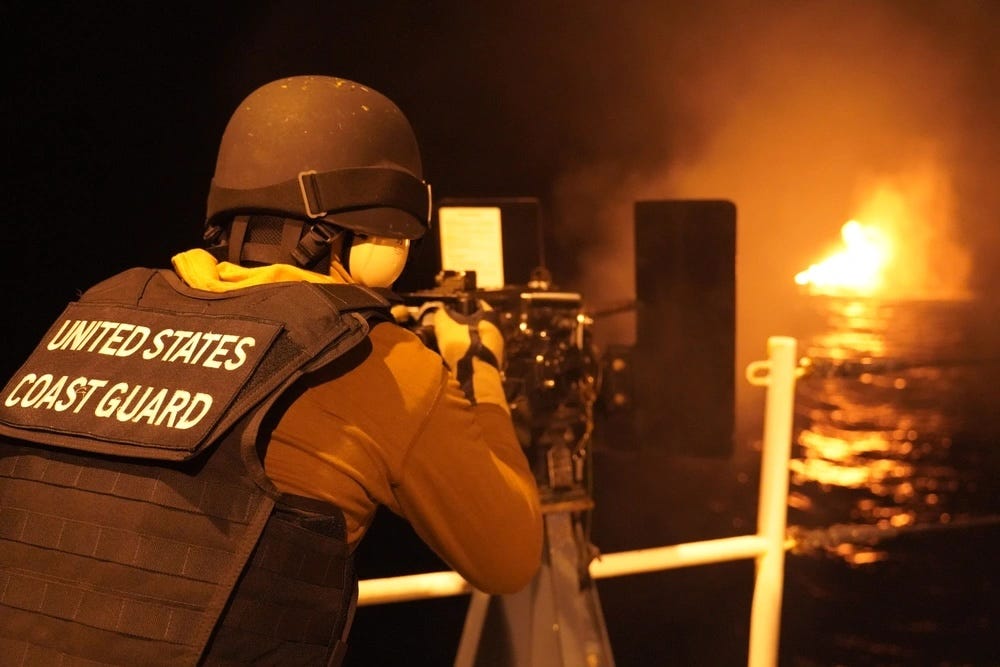
US Coast Guard photo
After documenting the drug-smuggling vessels for evidence, the boats are declared “stateless” and destroyed under international maritime law.
The Coast Guard strips the boat of illegal narcotics and any environmentally hazardous materials and scuttles the vessel using controlled charges or gunfire from cutter-mounted weapons or helicopters.
The seized narcotics are securely stored aboard a US vessel before being offloaded at a port and handed over to federal authorities, who weigh, test, and document the drugs as evidence.
The Drug Enforcement Agency handles the destruction of the narcotics once they are no longer needed in legal proceedings.
Connected to cartel drug networks
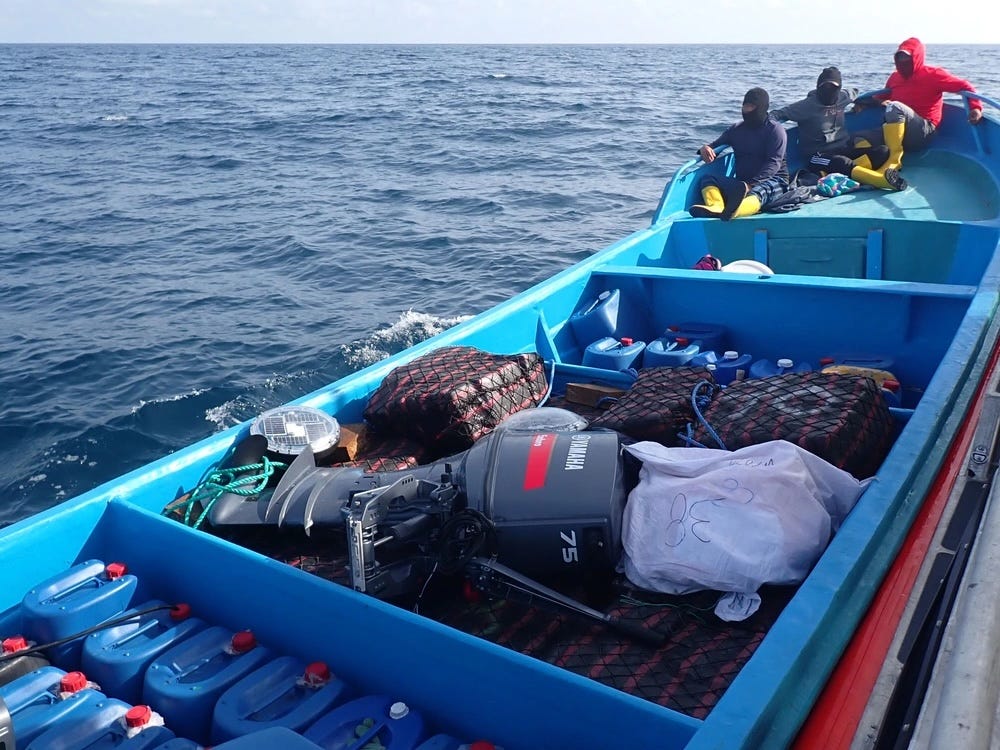
US Coast Guard photo
Nearly three dozen suspects were apprehended and transferred ashore for federal prosecution. Eleven people have been indicted so far.
Investigators have linked the suspected drug traffickers to cartel networks in Mexico and Colombia — Clan del Golfo, Cartel Jalisco Nueva Generación, and Sinaloa Cartel, one of the most powerful and well-known criminal groups in Mexico once led by Joaquín “El Chapo” Guzmán.
The US designated the Sinaloa Cartel and Cartel Jalisco Nueva Generación as foreign terrorist organizations. President Donald Trump has made stemming the flow of opioids into the US a top priority.
“This administration has labeled them foreign terrorist organizations because that’s what they are,” FBI Director Kash Patel said during a press conference last Wednesday.
Trump’s cartel crackdown
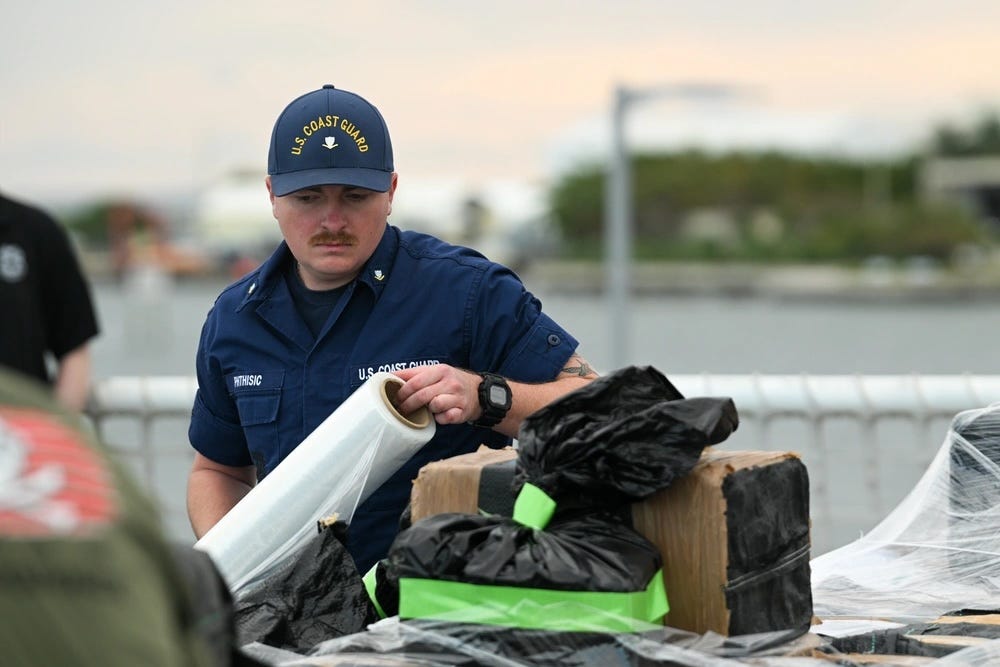
Coast Guard photo by Petty Officer 3rd Class Jessica Walker
Traditionally used for groups like ISIS or Al Qaeda that use attacks against civilians to pursue political goals, the FTO designation allows US authorities to employ counterterrorism tools, such as freezing assets, imposing sanctions, and other criminal penalties.
However, critics argued that such a designation on the cartels could strain US-Mexico relations and militarize what is largely a law enforcement issue, potentially affecting migrants and asylum seekers with only tangential cartel links or who were coerced or unknowingly connected to the crime groups.
The Trump administration has already implemented several aggressive measures to combat drug trafficking, including imposing tariffs to pressure neighboring countries to take stronger actions and deploying US military assets to the southern US border.
The post The US Coast Guard seized $510 million worth of drugs from smugglers, including a narco-sub. See photos of the busts. appeared first on Business Insider.




